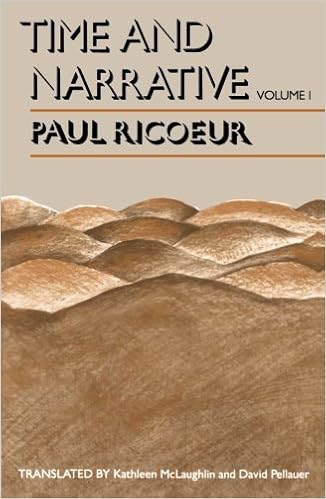
Flashes of lightning, resounding thunder, gloomy fog, outstanding sunshine…these are the existence manifestations of the skies. The concrete visceral stories that residing lower than these skies stir inside of us are the floor for person impulses, feelings, sentiments that during their interplay generate their very own ever-changing clouds. whereas our mind concentrates at the discovery of our cosmic place, at the structure of the universe, our mind's eye is trained through the gloomy vapors, the glimmers of fleeting gentle, and the honor of the skies. Reconnoitering from the soil of human existence and striving in the direction of the countless, the elan of mind's eye will get stuck up within the clouds of the skies. There in that dimness, sensory receptivity, tendencies, feelings, passionate strivings, yearnings, elevations assemble and propagate. From the “Passions of the Skies” spring innermost intuitions that nourish literature and the arts.
Read or Download Art, Literature, and Passions of the Skies (Analecta Husserliana, Volume 112) PDF
Similar Phenomenology books
Time and Narrative, Volume 1 (Time & Narrative)
Time and Narrative builds on Paul Ricoeur's past research, within the Rule of Metaphor, of semantic innovation on the point of the sentence. Ricoeur the following examines the production of that means on the textual point, with narrative instead of metaphor because the ruling quandary. Ricoeur unearths a "healthy circle" among time and narrative: time is humanized to the level that it portrays temporal adventure.
Phenomenology, including Marxism, pragmatism, and analytic philosophy, ruled philosophy within the 20th century—and Edmund Husserl is mostly suggestion to were the 1st to advance the concept that. His perspectives inspired various very important later thinkers, resembling Heidegger and Merleau-Ponty, who ultimately grew to become phenomenology clear of questions of data.
The philosophical paintings of Jean-Luc Marion has opened new methods of talking approximately non secular convictions and stories. during this exploration of Marion’s philosophy and theology, Christina M. Gschwandtner offers a finished and demanding research of the guidelines of saturated phenomena and the phenomenology of givenness.
Additional resources for Art, Literature, and Passions of the Skies (Analecta Husserliana, Volume 112)
Whilst Clegthorpe keeps to insist, “I suggest now that i'm Archbishop of Canterbury,” Archie asks, “Will nobody rid me of this turbulent priest! ” right here Stoppard is evoking the tale of the way King Henry II, in 1170, acknowledged phrases to this influence, leading to the homicide of Thomas à Becket, Archbishop of Canterbury. T. S. Eliot made a poetic play of this episode, homicide within the Cathedral (1935), as did Jean Anouilh within the prose Becket (1959). In Anouilh’s model, Becket is Henry’s ingesting and whoring good friend, whom the King imposes at the Church as Archbishop, as an insulting funny story, convinced that his top blood brother will do his bidding within the position of head of the English Church. Then Becket turns into encouraged to serve God, as his better grasp, instead of the King. In Stoppard’s Jumpers, Jumpers, followed through tune, strength Clegthorpe into their pyramid: “A gunshot. It stops the tune, and knocks CLEGTHORPE out of the pyramid, which disintegrates” (85–86). even though this motion precisely parallels the killing of McFee within the play’s starting scene, making it attainable to attach the 2 murders as in detail focused on the method of disenchantment, the problem isn't really straight forward. Mel Gussow charges Stoppard as announcing, “I write performs simply because writing discussion is the one first rate means of contradicting your self” (31). close to the start of Jumpers, George Moore rehearses his speech, which he plans to provide in that night’s debate with Professor McFee. George is disappointed that as an highbrow, he has to believe awkward that he believes in God. Rational proofs of God’s life were discredited, supposedly. Does George are looking to rehabilitate not less than one in every of them? How does he do that? George refers to St. Thomas Aquinas’s facts that God exists; in Stoppard’s paraphrase, the evidence is as follows: First step: each series has a starting. moment Step: The sequence in which each one impact had a reason which in flip had a reason, and so on. (i. e. , all occasions within the universe) is a series. end: hence, the universe should have a starting. Implication of the realization: the start, the 1st reason that's itself uncaused, needs to be God. The refutation of Aquinas’s evidence of God’s life comes from arithmetic. George says that mathematicians say they're accustomed to sequences that experience no starting. (This may disprove the outlet assumption of Aquinas’s evidence. ) An instance of a series with out starting is the sequence of right fractions happening in price from one towards 0. realize that because the backside quantity turns into greater, 0.5, third, 1/4, and so forth. , the worth of the fraction will get smaller. A mathematician has proved that there's no maximum quantity; therefore, the sequence of fractions with backside numbers going up continually has one other member that makes the fraction’s worth smaller than the former one; hence, the series of fractions by no means reaches 0. It keeps indefinitely. seen from 0 to 1, it's a series and not using a starting. George rejects this disproof, claiming that the mathematical series that by no means reaches 0 is simply a contemporary kind of Zeno’s paradox, during which Zeno proved that an arrow by no means reaches its aim, and but we all know from event that arrows do succeed in objectives.



